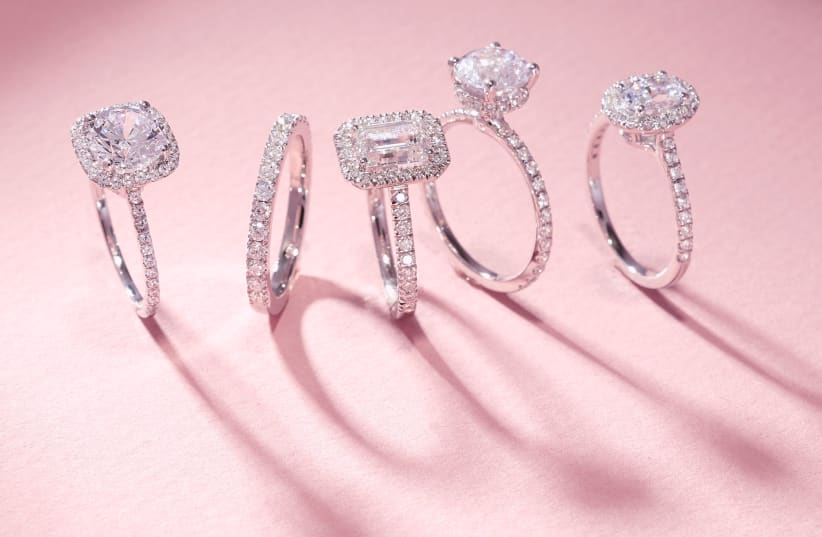What is Moissanite?
Moissanite has gained popularity as a beautiful and ethical alternative to diamonds. But what exactly is this gemstone, and why is it becoming such a popular choice?
The History of Moissanite
Moissanite was first discovered in 1893 by French scientist Henri Moissan. While examining rock samples from a meteorite crater in Arizona, Moissan encountered tiny crystals that he initially mistook for diamonds. These crystals, however, were not diamonds but rather a new substance composed of silicon carbide. Moissan’s discovery was groundbreaking, as it revealed a gemstone that possessed extraordinary qualities similar to diamonds, such as exceptional brilliance and hardness. Although natural moissanite is extremely rare moissanite vs diamond, advancements in technology allowed scientists to replicate these conditions in laboratories, creating high-quality synthetic moissanite that we use today.
Moissanite’s history is not just a tale of discovery but also one of innovation. The transformation from a rare meteorite crystal to a widely accessible gemstone reflects a remarkable journey of scientific progress and technological advancement. Today’s moissanite is created using sophisticated methods that ensure the gemstone’s brilliance and durability, making it a viable alternative to diamonds for engagement rings, fine jewelry, and more.
How Moissanite is Made
Modern moissanite is crafted in state-of-the-art laboratories. The process begins with the combination of silicon and carbon in a high-pressure, high-temperature environment that mimics the conditions found deep within the Earth’s mantle. This process creates a gemstone with exceptional clarity and brilliance. The resulting crystals are then cut and polished to enhance their natural beauty.
The creation of moissanite in a controlled environment allows for precise manipulation of the gem’s properties. Unlike natural diamonds, which can have inclusions and varying colors, lab-grown moissanite can be manufactured to meet specific standards of clarity and color. This makes moissanite an appealing choice for those who seek a gemstone with exceptional quality without the high cost associated with natural diamonds.
What is a Diamond?
Diamonds are not just the most well-known gemstones; they are also one of the most valuable and sought-after materials in the world. Let’s explore what makes diamonds so special and why they have captivated people for centuries.
The History of Diamonds
Diamonds have a storied history that dates back over 4,000 years. The first diamonds were discovered in India, where they were used in jewelry and as tools due to their unparalleled hardness. The diamond trade expanded over the centuries, with diamonds eventually reaching Europe where they became symbols of wealth and power. By the 20th century, diamonds were firmly established as the ultimate symbol of love and commitment, thanks in large part to successful marketing campaigns that linked diamonds to eternal romance.
Diamonds’ allure extends beyond their physical properties. Throughout history, they have been associated with various myths and legends. From ancient Indian tales of diamonds bringing good fortune to the role of diamonds in European crowns and jewelry, diamonds have been symbols of beauty, strength, and luxury.
How Diamonds are Formed
Diamonds are created under conditions of extreme pressure and temperature in the Earth’s mantle. Deep below the Earth’s surface, carbon atoms bond in a crystal lattice structure, forming diamonds over billions of years. This natural formation process makes diamonds incredibly rare and valuable. The unique conditions required for diamond formation mean that each diamond is a product of geological forces that have shaped the Earth over eons.
The rarity of natural diamonds contributes to their high value. Diamonds that reach the market are carefully mined, cut, and graded to ensure they meet the high standards expected by consumers. The entire process from formation to final sale is a complex and meticulous endeavor that underscores the diamond’s status as a premium gemstone.
Origin and Composition
Moissanite: Moissanite is a lab-created gemstone made from silicon carbide. Unlike diamonds, which are formed naturally over billions of years, moissanite is produced in controlled laboratory conditions. This process involves combining silicon and carbon at extremely high temperatures to create a gem that resembles diamond but is much more affordable.
The synthetic nature of moissanite means it can be produced to exacting standards, which often results in a gemstone with fewer imperfections compared to natural diamonds. This controlled production process also allows for a wider range of color options, from colorless to shades of yellow and green.
Diamond: Diamonds are natural gemstones that form deep within the Earth’s mantle under extreme pressure and heat. The natural formation of diamonds over billions of years gives them a unique rarity and value. Each diamond is a product of geological processes that are both ancient and complex.
Lab made diamonds, also known as synthetic or cultured diamonds, are created using advanced technology to replicate the natural conditions under which diamonds form. Unlike mined diamonds, which are extracted from the earth, lab-made diamonds are produced in controlled environments using methods like High Pressure High Temperature (HPHT) or Chemical Vapor Deposition (CVD).
Hardness and Durability
Moissanite: Moissanite scores 9.25 on the Mohs scale of hardness, which makes it an incredibly durable gemstone. This hardness means moissanite is resistant to scratching and can withstand the rigors of everyday wear. However, it is slightly less hard than diamonds, which score a perfect 10 on the Mohs scale.
Despite being slightly less hard than diamonds, moissanite’s durability is still impressive. It can be worn daily and will maintain its beauty over time. Its resistance to scratches and abrasions makes it a practical choice for engagement rings and other jewelry that will be worn frequently.
Diamond: Diamonds are renowned for their hardness, making them the hardest known natural substance. With a perfect score of 10 on the Mohs scale, diamonds are virtually indestructible. This hardness ensures that diamonds can be worn daily without fear of damage.
Diamonds’ superior hardness also means they are less likely to be scratched or damaged compared to other gemstones. This durability contributes to the diamond’s reputation as a symbol of eternal love and commitment.

